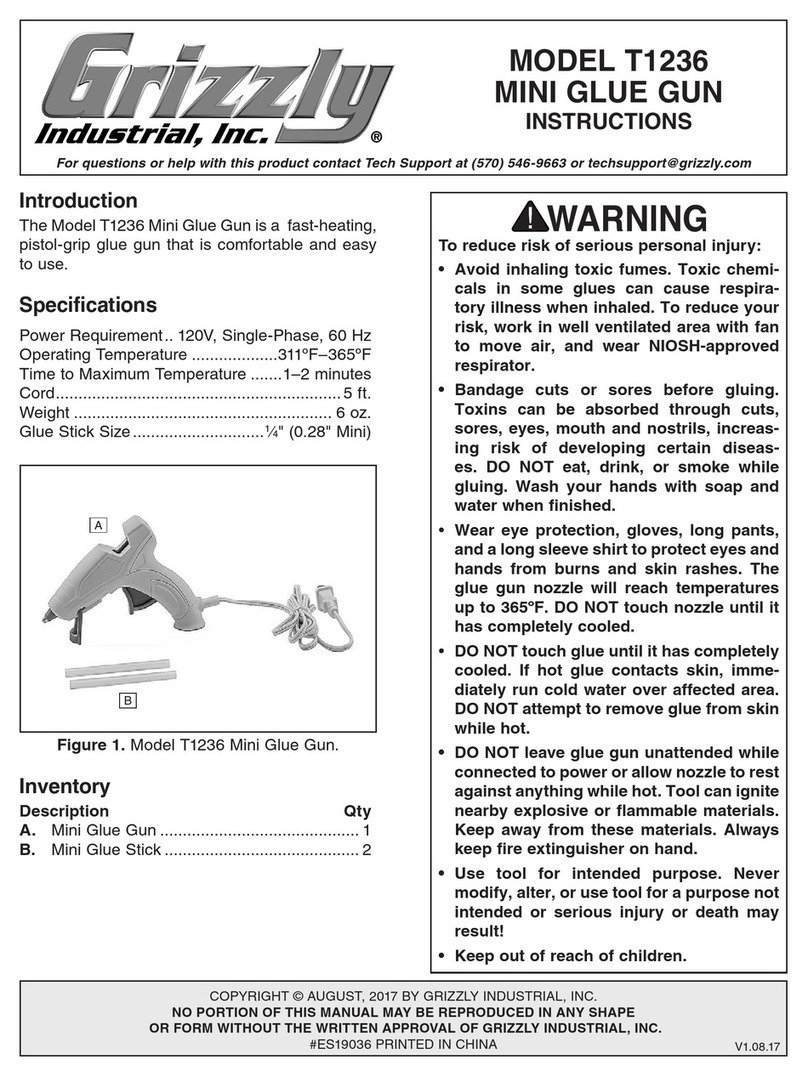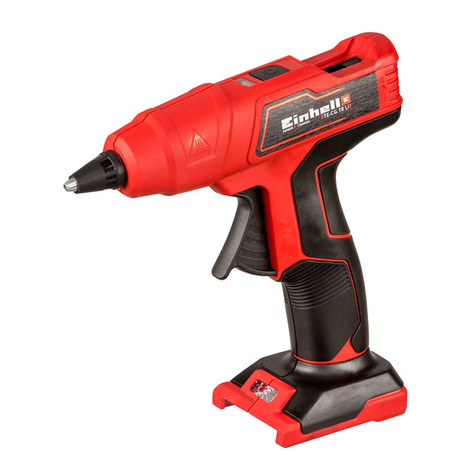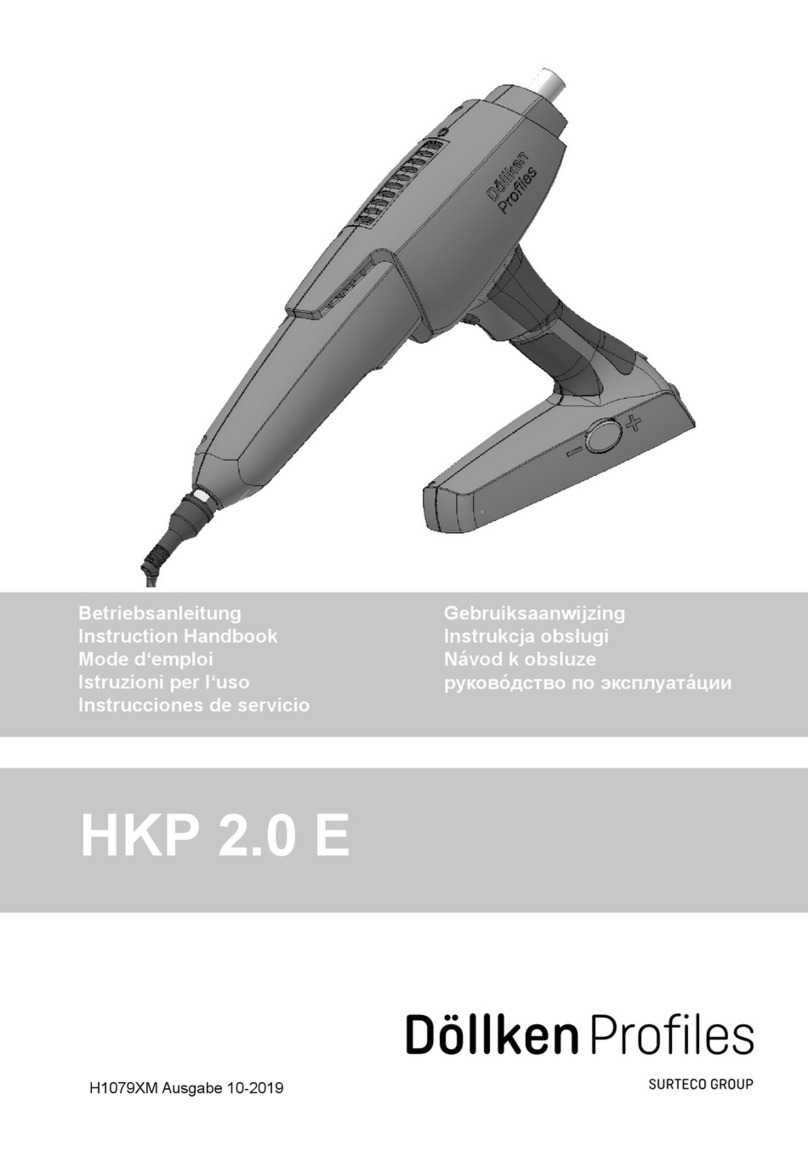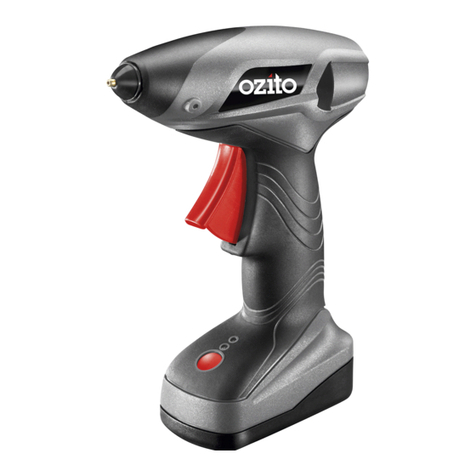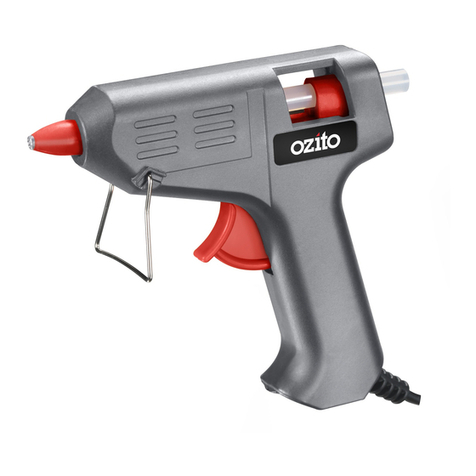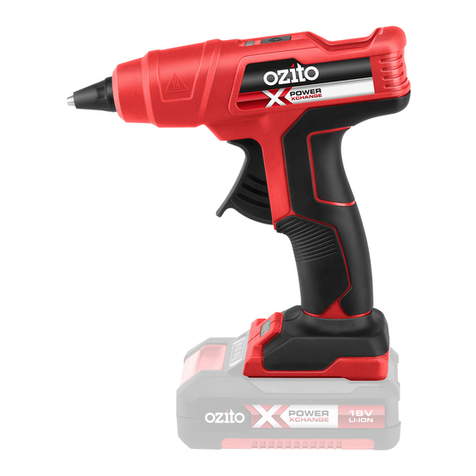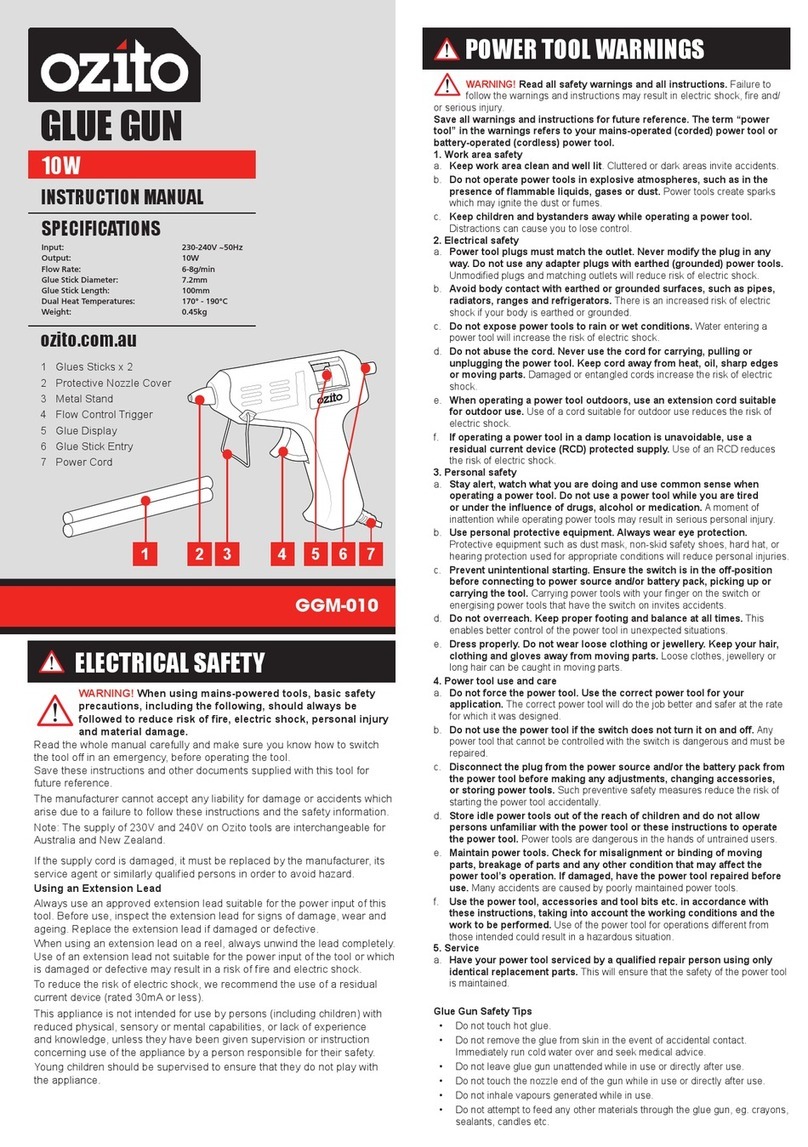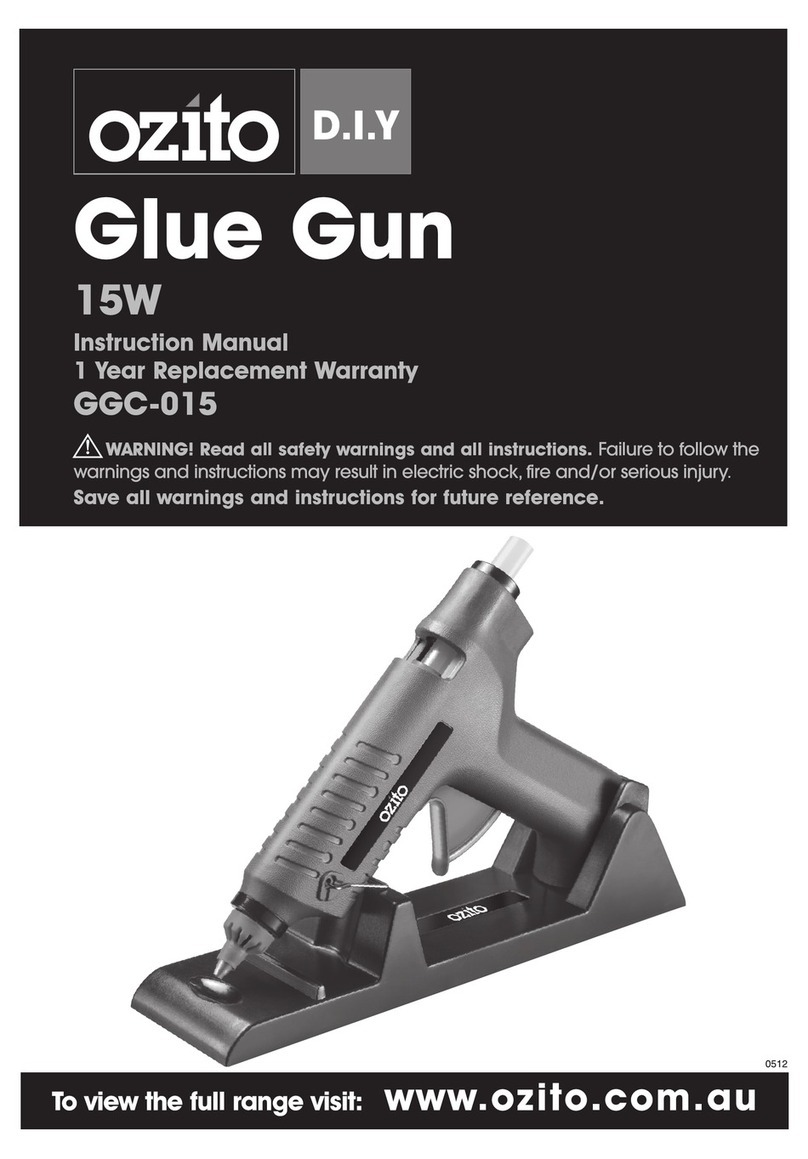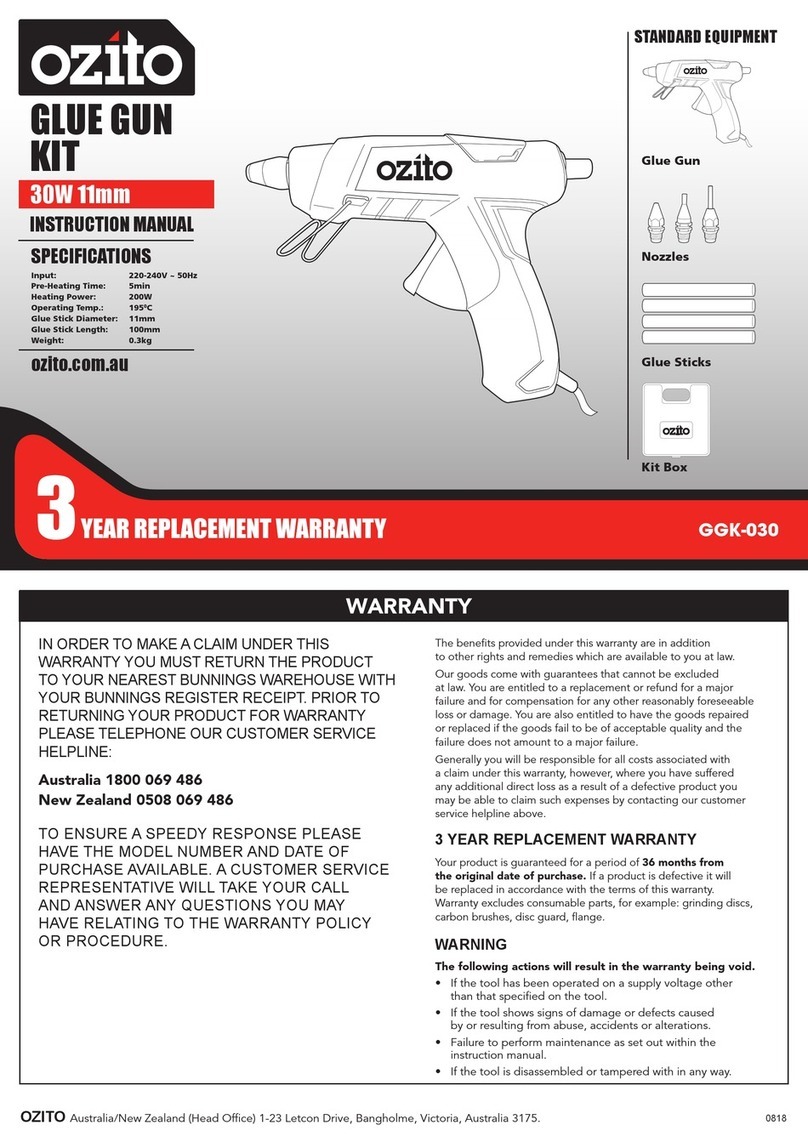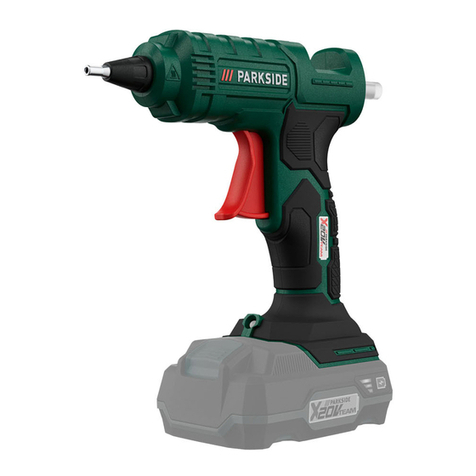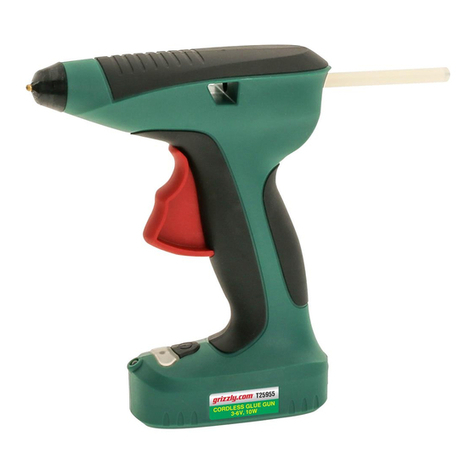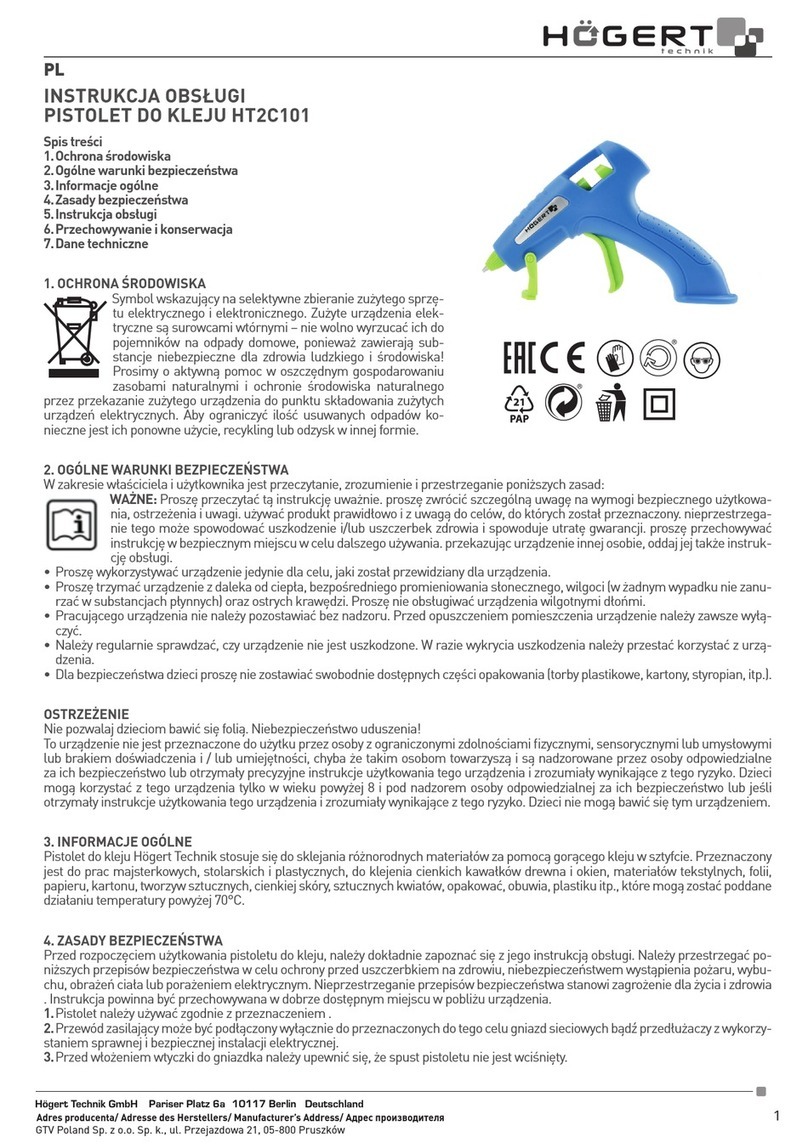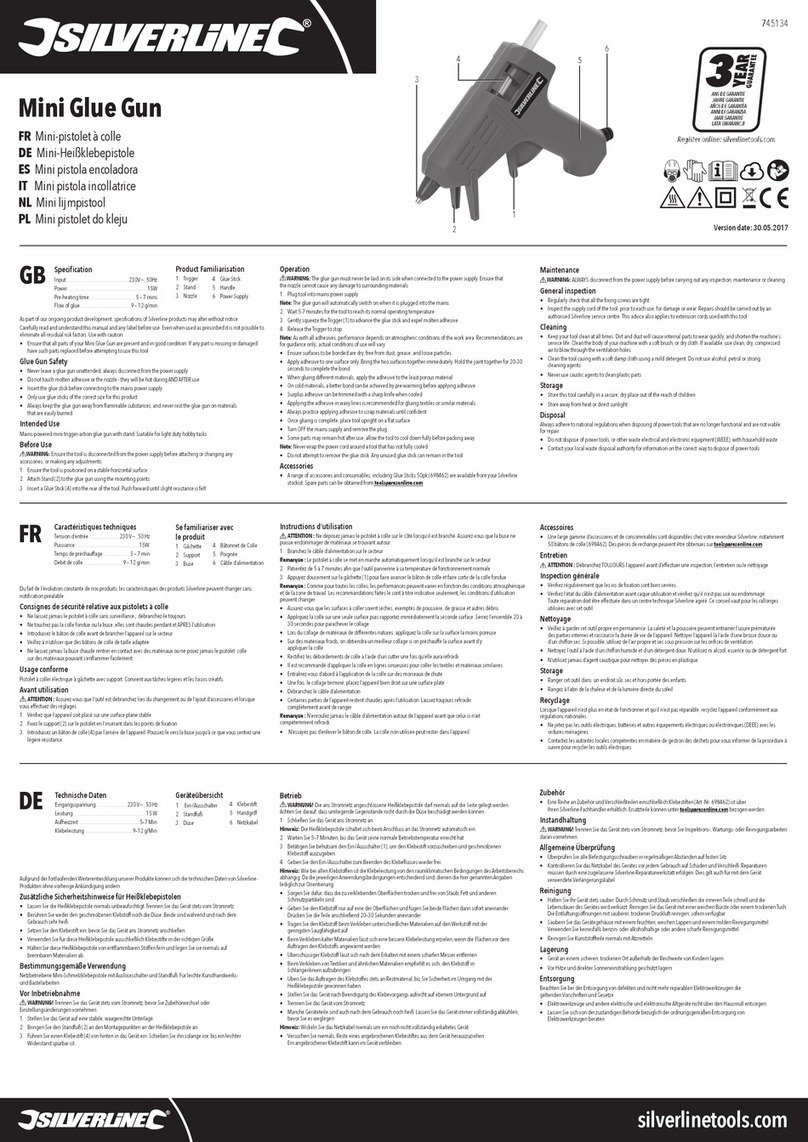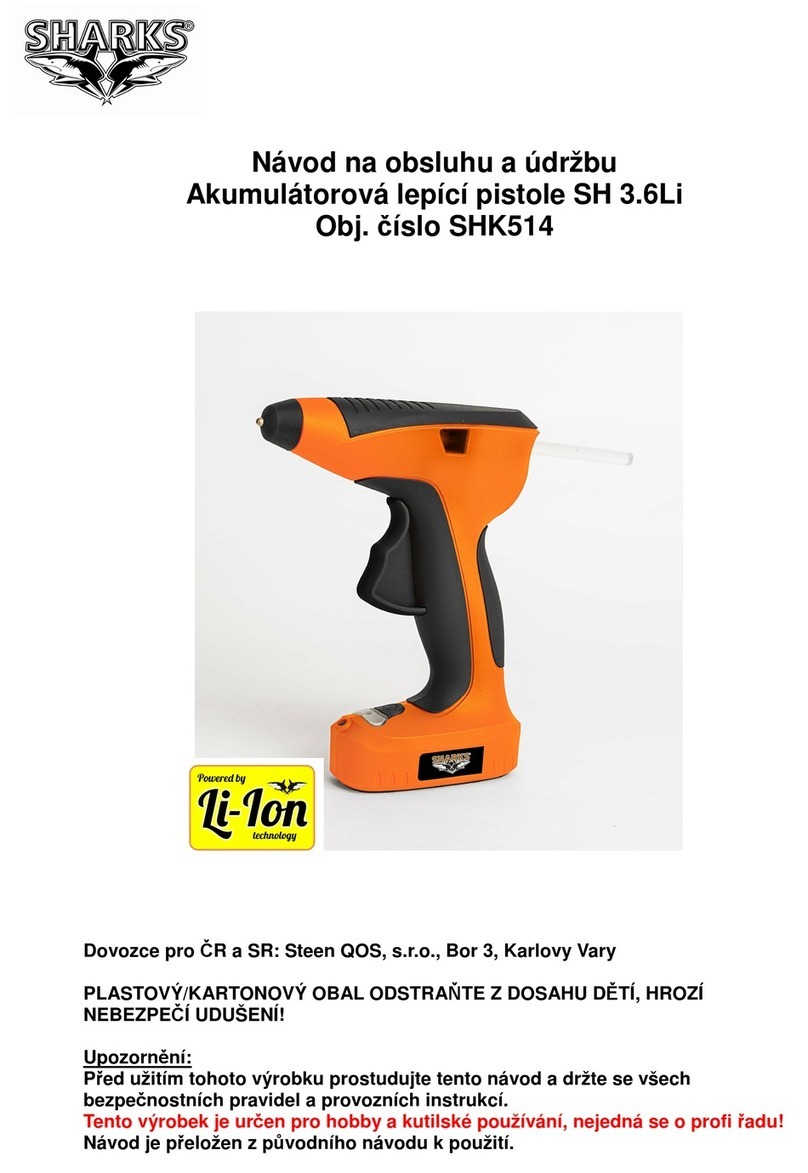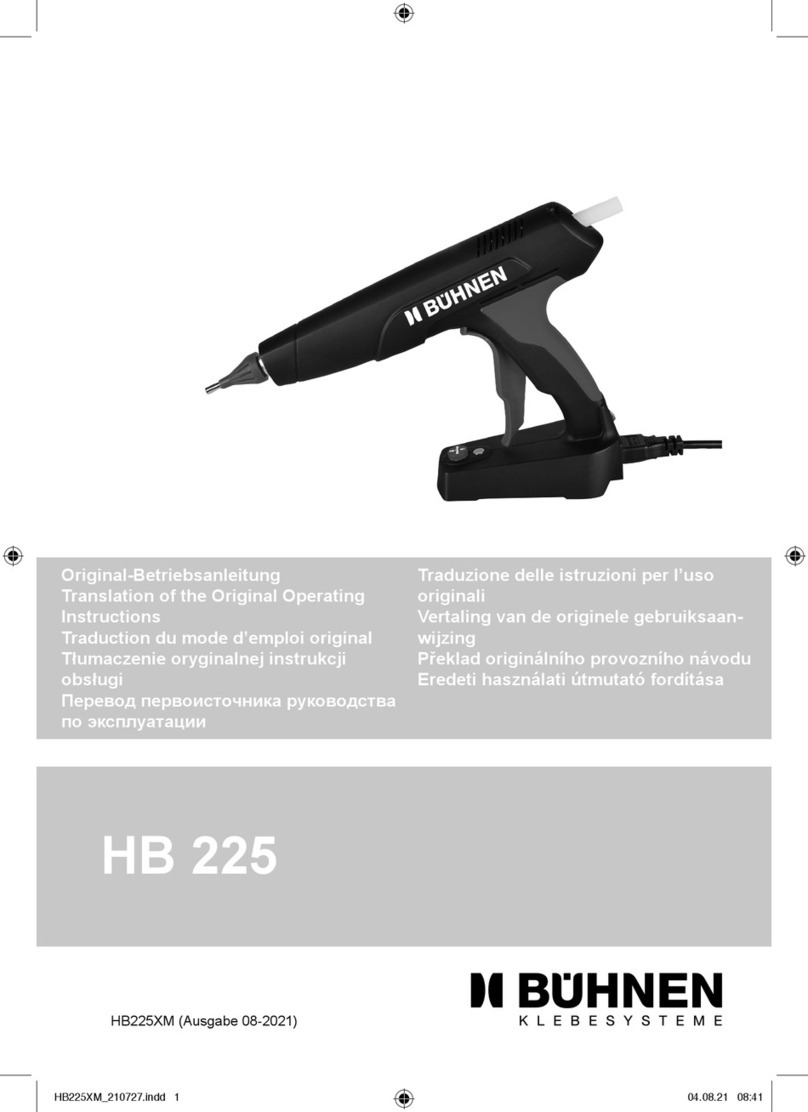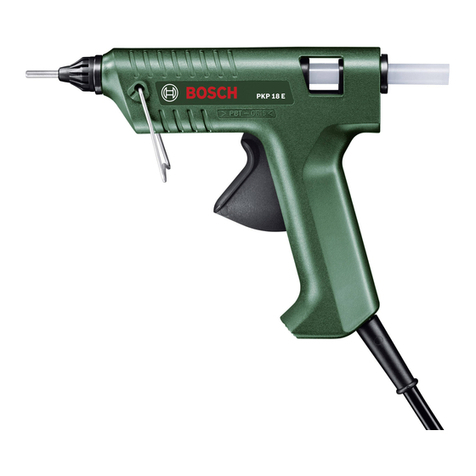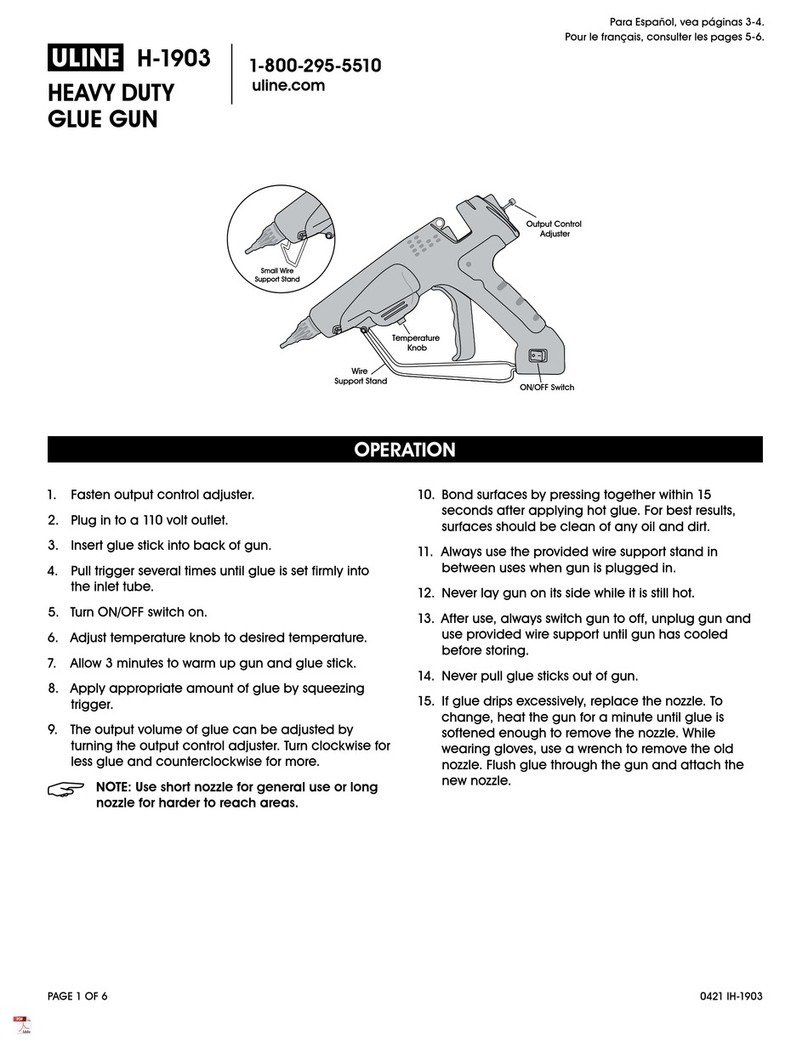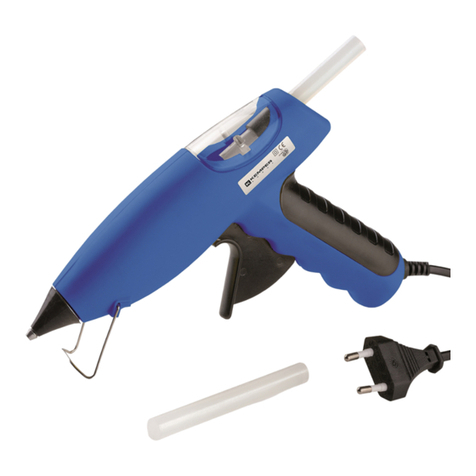4
1. Keep work areas clean. Cluttered work areas and benches can cause accidents.
2. Consider work area environment. Keep the work area well lit. Do not use
your tool where there is a risk of causing fire or explosion, e.g. in the presence
of flammable liquids and gases.
3. Keep children away. Do not allow children, visitors or animals to come near
the work area or to touch the tool or power lead.
4. Dress appropriately. Do not wear loose clothing or jewellery, as these can be
caught in moving parts. Wear protective hair covering to keep long hair out of
the way.
5. Head protection. Always use safety glasses. Use a face or dust mask whenever
the operations may produce dust or flying particles. Wear ear protection
whenever the sound level seems uncomfortable.
6. Guard against electric shock. Prevent body contact with earthed or grounded
surfaces (e.g. pipes, radiators, cookers and refrigerators). Electric safety can be
further improved by using a high sensitivity (30 mA / 30 mS) residual current
device (RCD).
7. Do not overreach. Keep proper footing and balance at all times.
8. Stay alert. Watch what you are doing. Use common sense. Do not operate the
tool when you are tired.
9. Secure work piece. Use clamps or a vice to hold the work piece; it is safer as it
frees both hands to operate the tool.
10. Remove adjusting keys and wrenches. Always check that adjusting keys and
wrenches are removed from the tool before operating the tool.
11. Extension leads. Before use inspect the extension leads and replace if
damaged. Do not use outdoors or near water, do not expose gun to rain,
moisture or direct sunlight.
12. Use appropriate tool. The intended use is described in this instruction
manual. Do not force small tools or attachments to do the job of a heavy duty
tool. The tool will do the job better and safer at the rate for which it was
intended. Do not force the tool.
Warning! The use of any accessory or attachment, or performance of any
operation with this tool other than those recommended in this instruction
manual may present a risk of personal injury.
13. Check for damaged parts. Before use carefully check the tool and power lead
for damage. Check for misalignment and seizure of moving parts, breakage of
parts, damage to guards and switches and any other conditions that may affect
its operation. Ensure that the tool will operate properly and perform its
intended function. Do not use the tool if any parts are damaged or defective.
Do not use the tool if the switch does not turn it on and off. Have any
damaged or defective parts repaired or replaced by an electrician or a power
tool repairer. Never attempt any repairs yourself.
GENERAL
